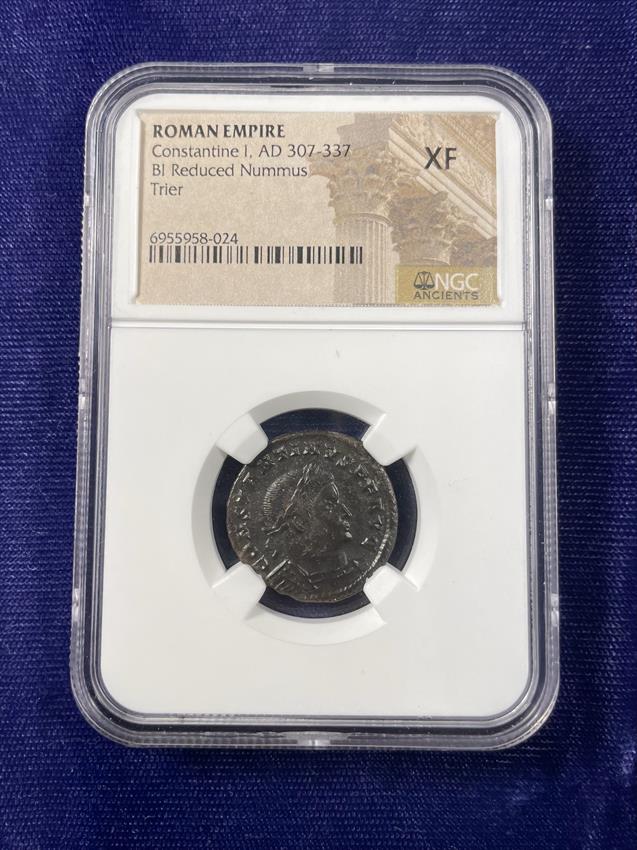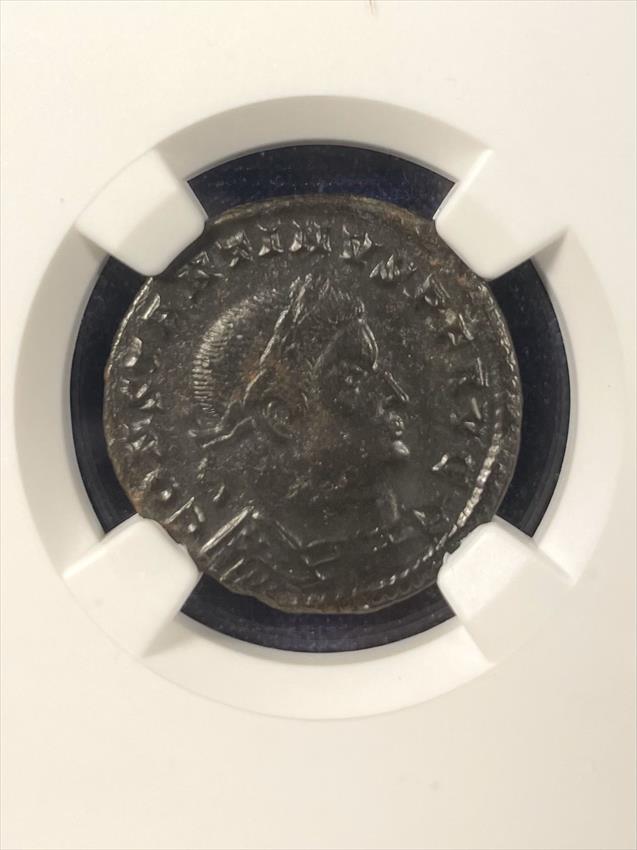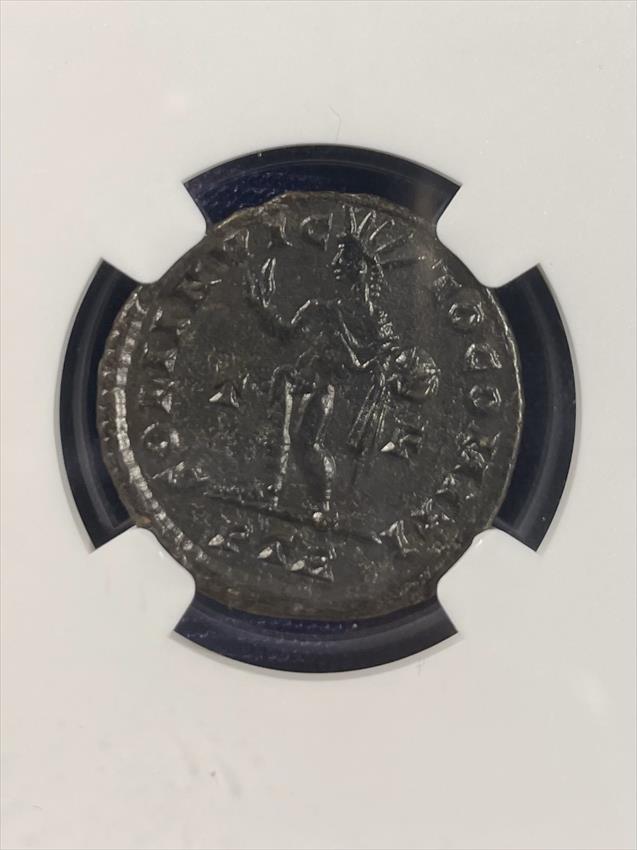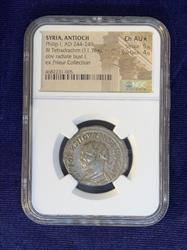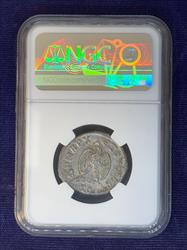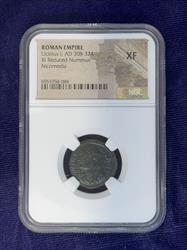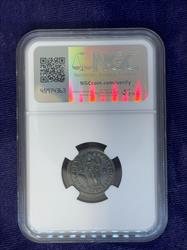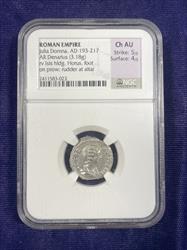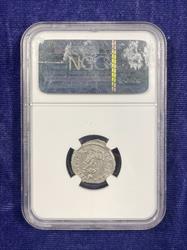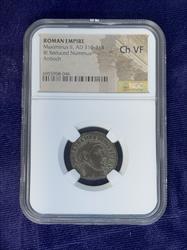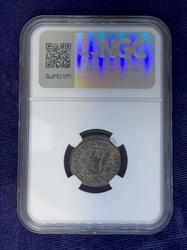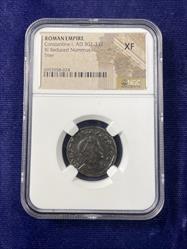
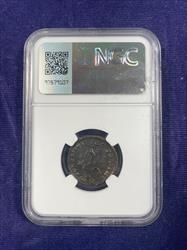
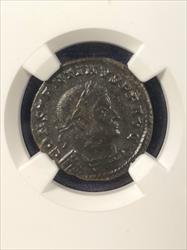
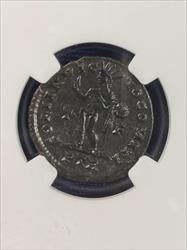
Constantine I BI Reduced Nummus AD 307-337 XF
$95.00
$98.09
Check/Wire
Credit Card
| Quantity | Check/Wire | Credit Card |
|---|---|---|
| 1+ | 95.00 | 98.09 |
- SKU: BFB005364
- Categories: ANCIENTS ROMAN ROMAN EMPIRE
Nummus is a Latin word derived from the Greek noummos which has several meanings, one of which is coin. Nummus can refer to various coins minted during the Roman Republic and Roman Empire. A reduced nummus is a nummus made with less material as the original nummus, resulting in a smaller coin. This specific reduced nummus was minted in Treveri (now known as Trier, Germany) during the reign of Constantine I.
Constantine I, also known as Constantine the Great, is best known for being the first Roman emperor to profess Christianity. He was born sometime in the 280s AD to Helena, who was later canonized as a saint, and Constantius I, who became emperor in 305. When Constantius died in 306, civil war broke out as Constantine, Macentius, and Licinius all declared themselves emperor. During this conflict, he converted to Christianity, and by 324 he had emerged as the sole ruler of the empire. Constantine attributed his success in life to his Christian faith. He kickstarted the Roman Empire’s transition to a Christian state, putting a stop to the oppression of Christians in the empire and decriminalizing Christianity. He also reformed the empire in non-religious respects, restructuring the government and the army. The city of Byzantium was renamed Constantinople (now known as Istanbul) after he built an imperial residence there, and the city served as the capital of the empire for over a thousand years. Despite his Christian faith, Constantine delayed his baptism until the end of his life. He died in 337 and was buried in his church of the Apostles in Constantinople. Many Eastern Christian denominations have venerated him as a saint.
This coin was graded XF (extremely fine) by the Numismatic Grading Company, the official grading service of the American Numismatic Association and the Professional Numismatists Guild. Here is a list of grades used by the NGC, as well as information about Strike, Surface, and Style ratings.
Constantine I, also known as Constantine the Great, is best known for being the first Roman emperor to profess Christianity. He was born sometime in the 280s AD to Helena, who was later canonized as a saint, and Constantius I, who became emperor in 305. When Constantius died in 306, civil war broke out as Constantine, Macentius, and Licinius all declared themselves emperor. During this conflict, he converted to Christianity, and by 324 he had emerged as the sole ruler of the empire. Constantine attributed his success in life to his Christian faith. He kickstarted the Roman Empire’s transition to a Christian state, putting a stop to the oppression of Christians in the empire and decriminalizing Christianity. He also reformed the empire in non-religious respects, restructuring the government and the army. The city of Byzantium was renamed Constantinople (now known as Istanbul) after he built an imperial residence there, and the city served as the capital of the empire for over a thousand years. Despite his Christian faith, Constantine delayed his baptism until the end of his life. He died in 337 and was buried in his church of the Apostles in Constantinople. Many Eastern Christian denominations have venerated him as a saint.
This coin was graded XF (extremely fine) by the Numismatic Grading Company, the official grading service of the American Numismatic Association and the Professional Numismatists Guild. Here is a list of grades used by the NGC, as well as information about Strike, Surface, and Style ratings.
Obverse: CONSTANTINVS P F AVG (Constantinus Pius Felix Augustus, translation: Constantine, Pious and Happy Emperor); Bust of Constantine I, laureate, cuirassed, right
Reverse: SOLI INVICTO COMITI (Unconquerable Sol, companion of the emperor); Sol, the sun god, standing, raising right hand and holding globe in left, mint mark PTR, T F in field
Reference: RCV 16060, RIC VI Treveri 865-76

